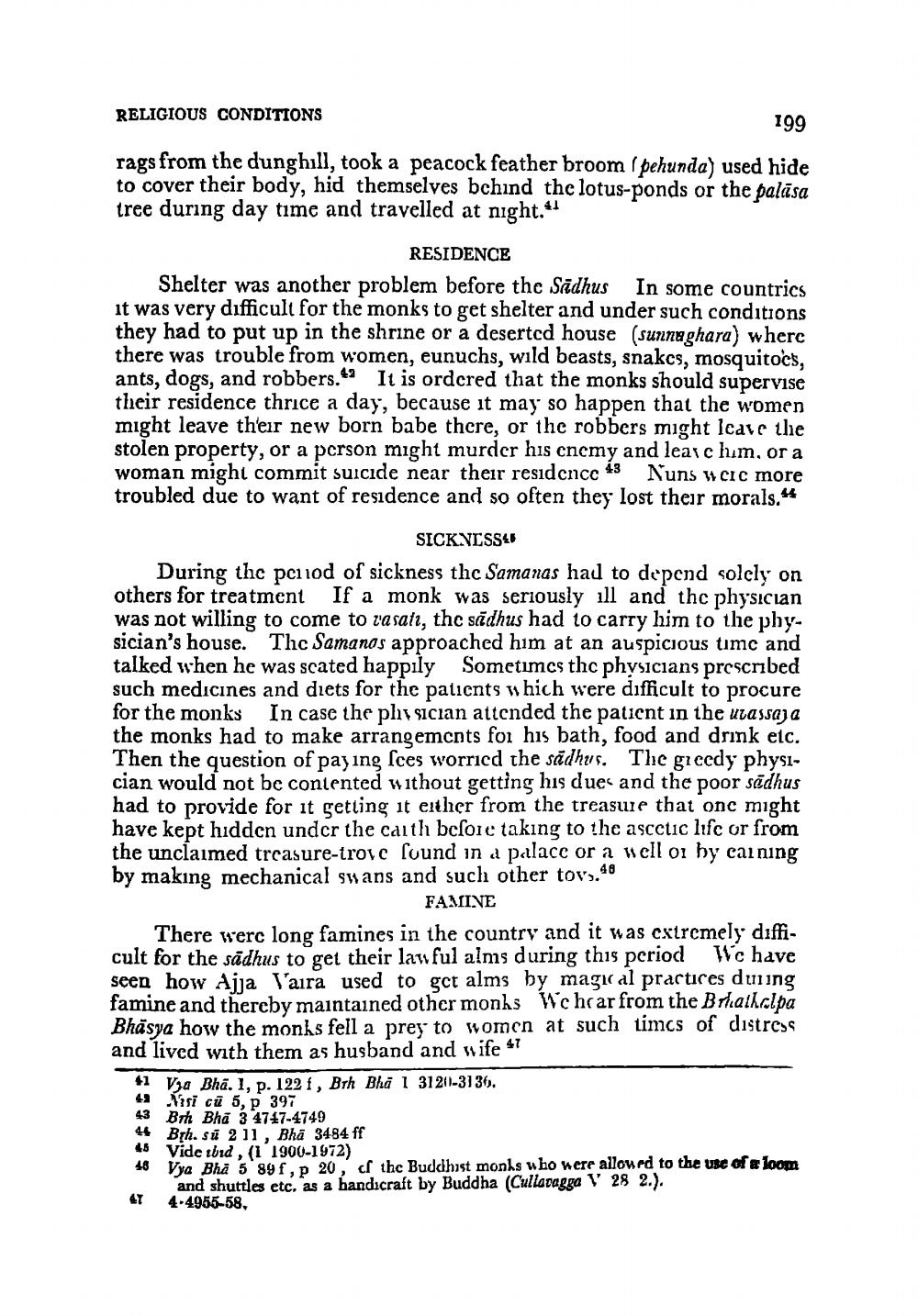________________
199
rags from the dunghill, took a peacock feather broom (pehunda) used hide to cover their body, hid themselves behind the lotus-ponds or the palāsa tree during day time and travelled at night.11
RELIGIOUS CONDITIONS
RESIDENCE
Shelter was another problem before the Sadhus In some countrics it was very difficult for the monks to get shelter and under such conditions they had to put up in the shrine or a deserted house (sunnaghara) where there was trouble from women, eunuchs, wild beasts, snakes, mosquitoes, ants, dogs, and robbers. It is ordered that the monks should supervise their residence thrice a day, because it may so happen that the women might leave their new born babe there, or the robbers might leave the stolen property, or a person might murder his enemy and leave him, or a woman might commit suicide near their residence 43 Nuns were more troubled due to want of residence and so often they lost their morals."
SICKNESS
During the period of sickness the Samanas had to depend solely on others for treatment If a monk was seriously ill and the physician was not willing to come to vasali, the sadhus had to carry him to the physician's house. The Samanos approached him at an auspicious time and talked when he was scated happily Sometimes the physicians prescribed such medicines and diets for the patients which were difficult to procure for the monks In case the physician attended the patient in the uzassaja the monks had to make arrangements for his bath, food and drink etc. Then the question of paying fees worried the sadhus. The greedy physician would not be contented without getting his dues and the poor sadhus had to provide for it getting it either from the treasure that one might have kept hidden under the caith before taking to the ascetic life or from the unclaimed treasure-trove found in a palace or a well or by caining by making mechanical swans and such other tovs.
48
FAMINE
There were long famines in the country and it was extremely difficult for the sadhus to get their lawful alms during this period We have seen how Ajja Vaira used to get alms by magical practices during famine and thereby maintained other monks We hear from the Briathalpa Bhasya how the monks fell a prey to women at such times of distress and lived with them as husband and wife 47
Va Bha. 1, p. 122 f, Brh Bhā 1 3120-3136.
42
Asi cu 5, p 397
43 Brh Bha 3 4747-4749
41
4 Brh. su 211, Bha 3484 ff
45 Vide ibid, (1 1900-1972)
48
4T
Vya Bha 5 89f, p 20 cf the Buddhist monks who were allowed to the use of a loom and shuttles etc. as a handicraft by Buddha (Cullavagga V 28 2.).
4-4955-58,




